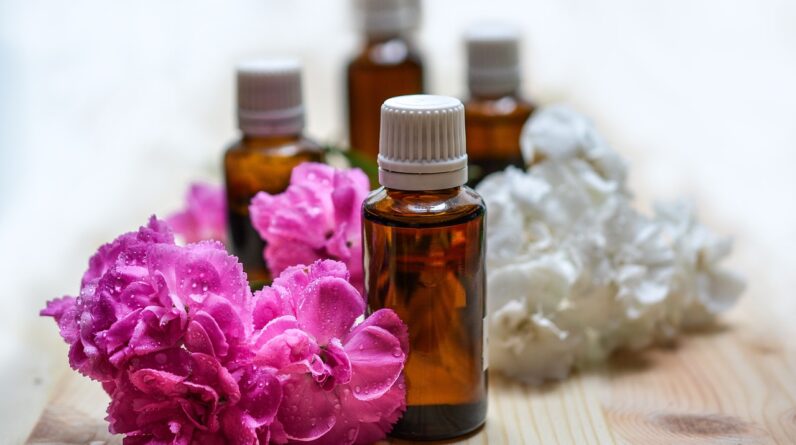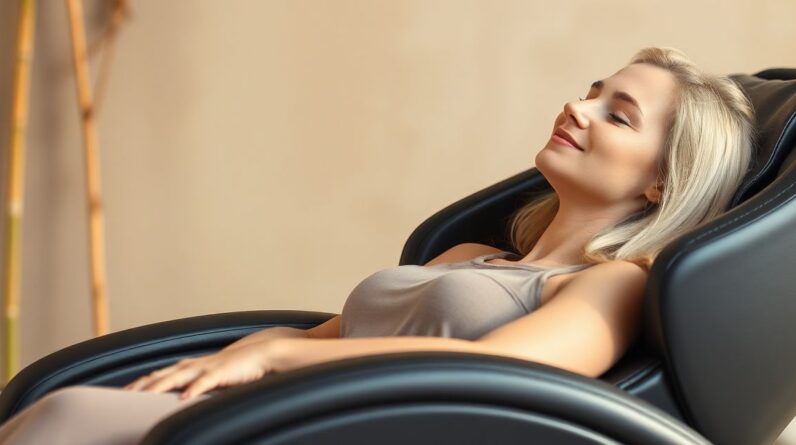
As you navigate through life’s hustle and bustle, finding a sanctuary of tranquility becomes a cherished necessity. “Soothing Your Senses with Aromatherapy, Sound, and Touch,” helps you explore this sanctuary within your senses. This enlightening piece guides you to discover the power of aromatherapy, sound, and touch for relaxation, unravelling how these elements can help you flourish a newfound sense of calm and peace. Let’s embark on this journey to tranquility together, tuning your senses to foster a serene haven amidst the chaos.
Table of Contents
Understanding the Concept of Sensory Therapies
Defining sensory therapies
To start with, sensory therapies refer to several mind-body methods designed to utilize your senses – touch, smell, and hearing – to initiate relaxation, reduce stress, and promote wellness. It’s a holistic approach that aims to engage your senses to balance and restore your mind, body, and spirit. Sensory therapies include aromatherapy, sound therapy, and touch therapy amongst others.
How can sensory therapies relax the mind and body?
Sensory therapies can stimulate certain responses in your brain that elicit relaxation and calmness. For instance, a soothing aroma or a gentle touch can trigger a chemical release in your brain that can reduce anxiety, relieve tension, and promote a sense of wellbeing. These simple stimulations can rewire your brain to make you more resilient, display enhanced mood regulation, and build a greater capacity to cope with stress.
Scientific basis for sensory therapies
The power of sensory therapies lies in their ability to stimulate the limbic system – an area of the brain associated with memory, emotional responses including stress, and physiological functions. Upon stimulation, the brain can release chemicals like endorphins, serotonin, and dopamine, which are known to induce feelings of relaxation, happiness, and reduce anxiety levels. Remember, the sense of touch, smell, and sound play a pivotal role in controlling various bodily mechanisms.
Exploring the Art of Aromatherapy
History of aromatherapy
Aromatherapy can be traced back to ancient civilizations of Egypt and China, where the use of essential oils was common for various purposes, such as spiritual rituals and medicinal treatments. This therapeutic approach was rediscovered in the twentieth century and has since grown in popularity due to its natural, non-invasive nature, and potential health benefits.
How aromatherapy works
The essence of aromatherapy lies in using potent essential oils extracted from different plants. When you inhale these aromas, the molecules reach the olfactory bulbs in your nasal cavity. They then stimulate the limbic system – the emotional brain, triggering a range of responses that can influence your mood, memory, emotions, and even bodily functions.
Benefits of aromatherapy
Aromatherapy can help relax the mind, relieve physical discomfort, and enhance overall well-being. By affecting the nervous system, aromatherapy may help ease stress, improve sleep, boost mood, and stimulate cognitive performance. Plus, it may aid in managing pain and inflammation due to its potential anti-inflammatory properties.
Popular essential oils and their uses
Each essential oil has unique properties and potential health benefits. Some popular ones include lavender for relaxation and sleep, peppermint for its invigoration qualities, and chamomile for its calming effects. Eucalyptus can help clear sinuses, while Rosemary may improve focus and memory.

Creating An Aromatherapy Experience at Home
Choosing the right essential oils
Selecting essential oils boils down to preference and purpose. You might want to choose calming lavender for bedtime, uplifting citrus for mornings, or clearing eucalyptus when you’re under the weather. Always purchase high-quality oils, preferably organic, and do a skin test to avoid any allergic reaction.
Methods of application: diffusers, sprays, massages
There are various ways to use the essential oils. You could use a diffuser to fill the room with your chosen scent, or make a spray by mixing with water. Additionally, you can incorporate the oils in your self-massage routine or add drops to your bath water. Always remember to dilute essential oils with a carrier oil before applying it on your skin.
Safety precautions to note
Despite their natural origins, essential oils can cause allergic reactions or skin irritation. It’s recommended to always do a patch test before applying oils to a larger skin area. Never ingest essential oils unless advised by a professional. Pregnant women and individuals with specific health conditions should also consult with a healthcare provider before incorporating aromatherapy into their wellness routine.
Delving Into the World of Sound Therapy
Different types of sound therapy
Sound therapy comes in various forms such as music therapy, binaural beats, Solfeggio frequencies, and the use of Tibetan singing bowls. These therapies are centered around the concept that resonance frequencies can influence brainwave activity and physiological function.
How sound therapy works
Sound therapy functions on the principle of frequency vibrations that interact with our body’s bioenergetic field. These vibrations can potentially influence our brainwaves, pushing the brain from a state of alertness to a relaxed and calm state.
Benefits of sound therapy
Sound therapy may elicit a host of positive effects, such as inducing relaxation, improving sleep quality, boosting mood, relieving stress, and facilitating meditation. Furthermore, it may enhance cognitive and motor function in individuals recovering from a stroke or struggling with Parkinson’s disease.
Famous sound therapy methods
Sound therapy methods like binaural beats and Solfeggio frequencies have found a place in the mainstream wellness. Tibetan singing bowls are widely used in meditation and yoga practices, while gong baths provide a unique sensory experience in sound therapy through their powerful resonance and vibrations.

Honing Your Own Sound Therapy Sessions at Home
Basic instruments needed for sound therapy
You can start with simple instruments like a singing bowl, a gong, or tuning forks. There are also a plethora of sound therapy apps and online resources available offering a range of frequency healing music, binaural beats, and other sound therapies.
The right environment for sound therapy
Ideally, sound therapy should be practiced in a calm, quiet, and comfortable setting free from distractions. You can create a cozy nook at home by dimming the lights, burning some incense, and making sure you’re relaxed and open to the experience.
Sound therapy techniques for beginners
Beginners can start with listening to calming music or ambient sounds before diving into more intense sound therapy techniques. Remember, the journey with sound therapy is deeply personal and varies from person to person. Take your time and tune into what feels good for you.
The Magic of Touch Therapy
Different styles of touch therapy
Touch therapies encompass a diverse array of practices such as massage therapy, acupressure, reflexology, Reiki, and cranial sacral therapy. Each method holds unique approaches to engage your sense of touch and bring about physical, emotional, and mental healing.
How touch therapy works
Touch therapy employs various techniques to put pressure on particular points of the body, stimulating blood flow, releasing tension, and relieving stress. This type of sensory therapy can influence our nervous system, trigger the release of endorphins, and enhance overall well-being.
Benefits of touch therapy
Touch therapy can provide a vast array of benefits, including pain relief, stress reduction, improved sleep, enhanced mood, and, for massage particularly, improved blood flow and flexibility. Some styles of touch therapy, such as Reiki, can also promote a sense of spiritual connectedness and peace.
Incorporating Touch Therapy into Your Daily Life
Engaging in self-massage
Self-massage can be a simple and effective way of incorporating touch therapy into your daily routine. With the help of a foam roller or even your hands, you can soothe sore muscles, improve circulation, and promote relaxation. Whether it’s your neck, your feet, or your back, a little self-massage can go a long way!
Training a partner in touch therapy
Teaching a partner basic touch therapy techniques can be a rewarding experience. Partner massage can be a fun way to connect with your loved one while providing and receiving physical and emotional stress relief. If teaching isn’t your thing, you can always turn to a tutorial video or book to guide you.
The role of professional touch therapists
Although there is great benefit in self-treatment and partner pain management, professional touch therapists bring a refined skill, knowledge, and understanding of therapies that we might not possess. A professional has detailed anatomical knowledge and can customize therapy to meet individual needs, which could be more effective and safer.
Combining Aromatherapy, Sound, and Touch
Understanding the synergy of these therapies
The combination of aromatherapy, sound, and touch therapies can create a more comprehensive, deep-reaching therapeutic experience. All three of these sensory therapies influence the nervous system and the brain, heightening the senses, harmonizing the mind and the body, and evoking a holistic relaxation.
Building a sensory therapy routine
Creating a sensory therapy routine will depend on your preferences and availability. However, for a basic routine, you may consider starting with a peaceful sound therapy session, followed by an aromatherapy-enhanced meditation. You can finish off with a gentle self-massage using essential oils. Remember, the key to routine building is consistency, so select therapies that you enjoy and can commit to.
Case Studies on the Benefits of Sensory Therapies
Interview with career individuals
Several busy professionals have reported a significant reduction in stress levels and improved productivity after incorporating sensory therapy into their routine. Aromatherapy, for instance, can be easily integrated into office spaces and might help reduce anxiety and improve concentration. Moreover, techniques such as deep breathing exercises and guided imagery can also enhance the calming effects of sensory therapy. For those looking to understand the principles behind these practices, the concept of stress management explained simply reveals the importance of creating a mindful environment. By dedicating just a few moments each day to these activities, professionals can foster a more balanced mindset and boost their overall well-being.
Health benefits recorded in elderly patients
Research has shown that sensory therapies such as sound therapy and touch therapy could contribute to overall well-being and improve cognitive function in elderly patients. Furthermore, aromatherapy patience has been found to be beneficial in promoting relaxation and aiding sleep in senior populations.
Positive effects on children with special needs
Kids with special needs, particularly those with sensory processing disorders, often benefit immensely from sensory therapies. Several studies suggest that these therapies can help them manage sensory overloads, improve communication skills, and decrease anxiety levels.
Dispelling Myths & Misconceptions About Sensory Therapies
Debunking common misconceptions
Despite the growing interest and research on sensory therapies, misconceptions persist. One such myth is that these therapies are fake or “new age.” In reality, sensory therapies like aromatherapy and touch therapy have been practiced for centuries. Another misconception is that sensory therapies can cure serious physical and mental illnesses when they’re really intended to complement traditional therapies and promote overall well-being.
Understanding the limitations of sensory therapies
While sensory therapies can offer remarkable benefits, they have their limits. They’re generally supportive, holistic approaches designed to promote relaxation and improve quality of life. It’s essential to recognize these therapies are not meant to replace traditional medical care but rather to complement it. Always consult with your healthcare provider before incorporating sensory therapies into your wellness routine.





